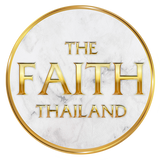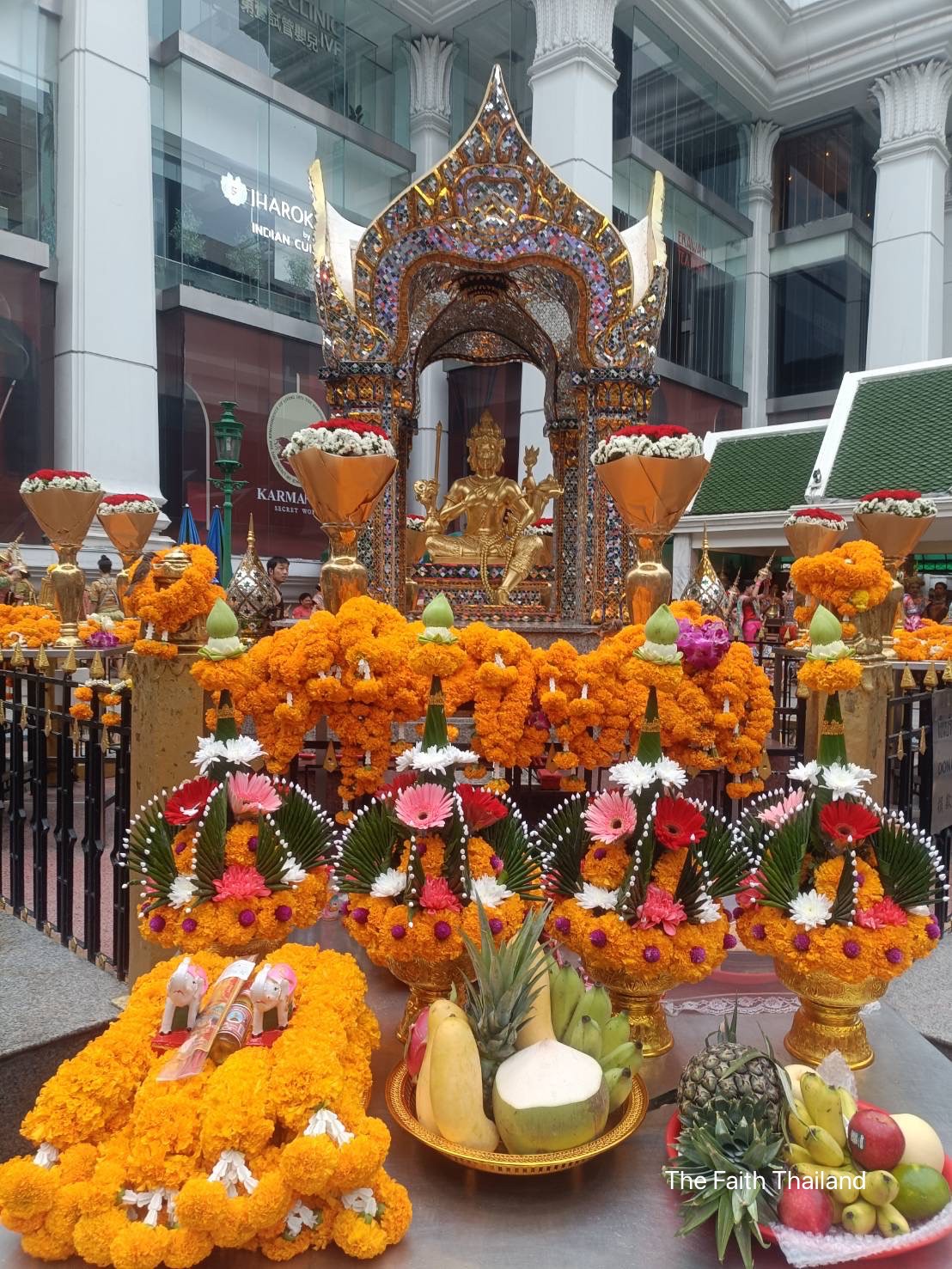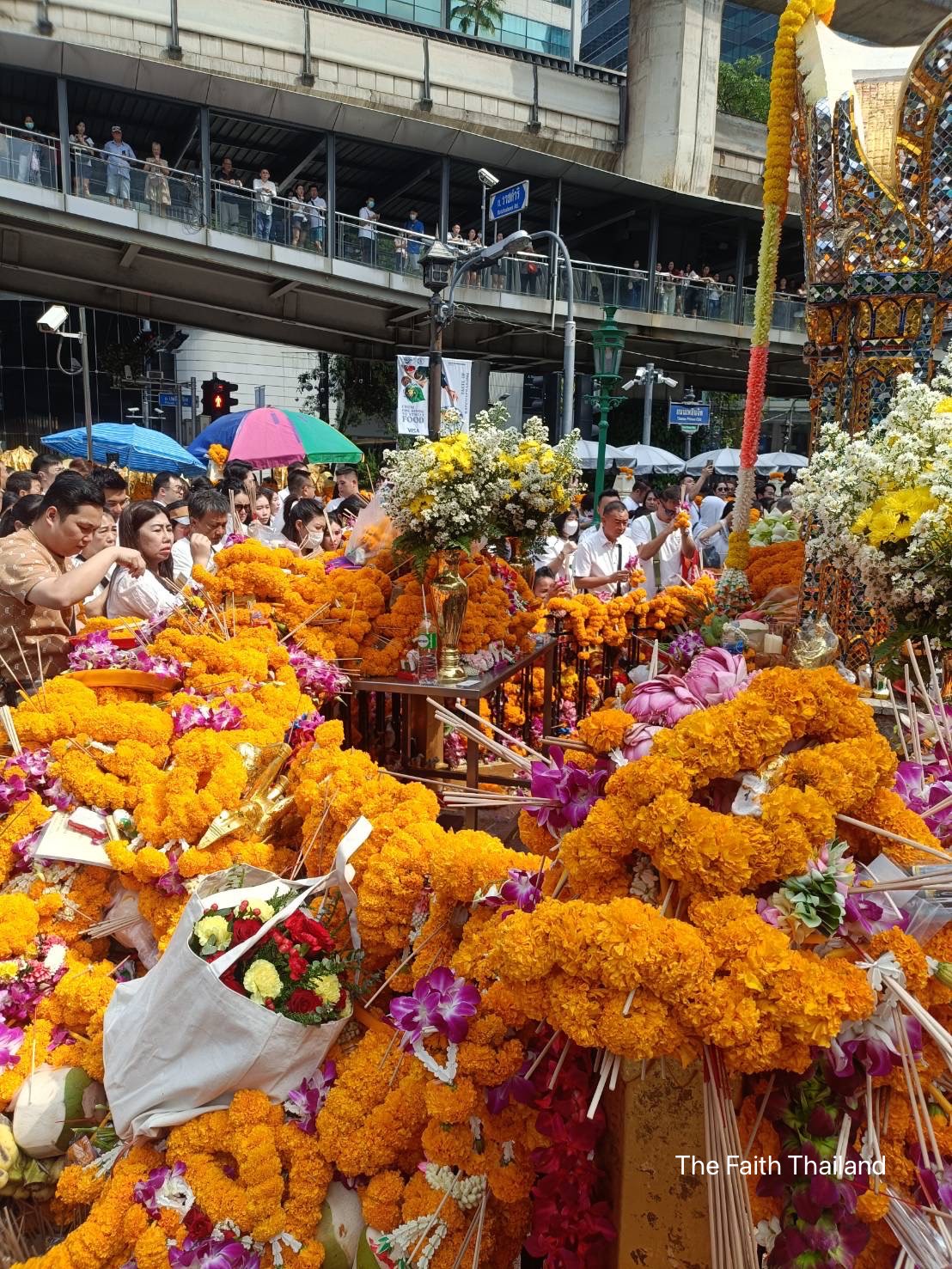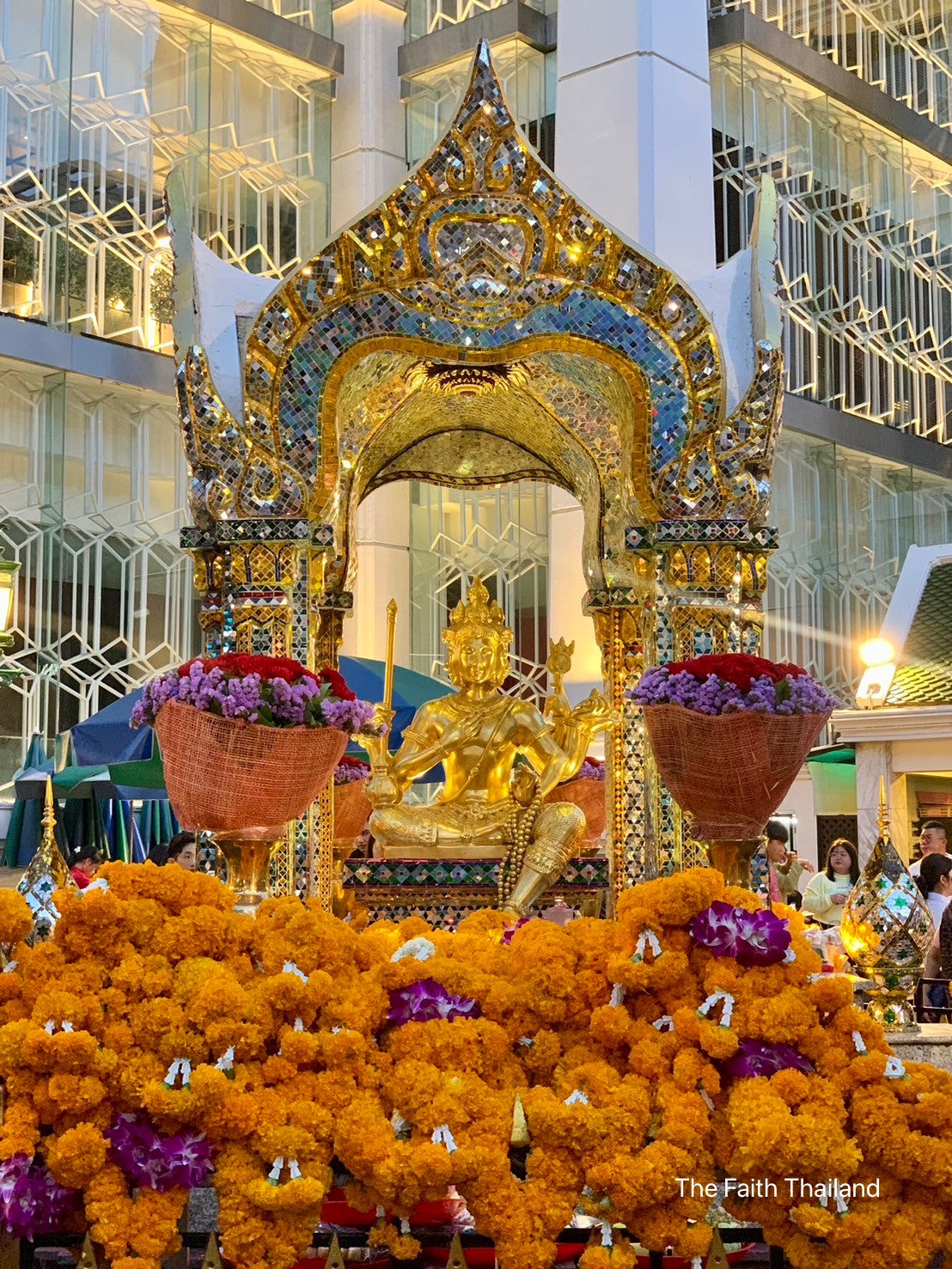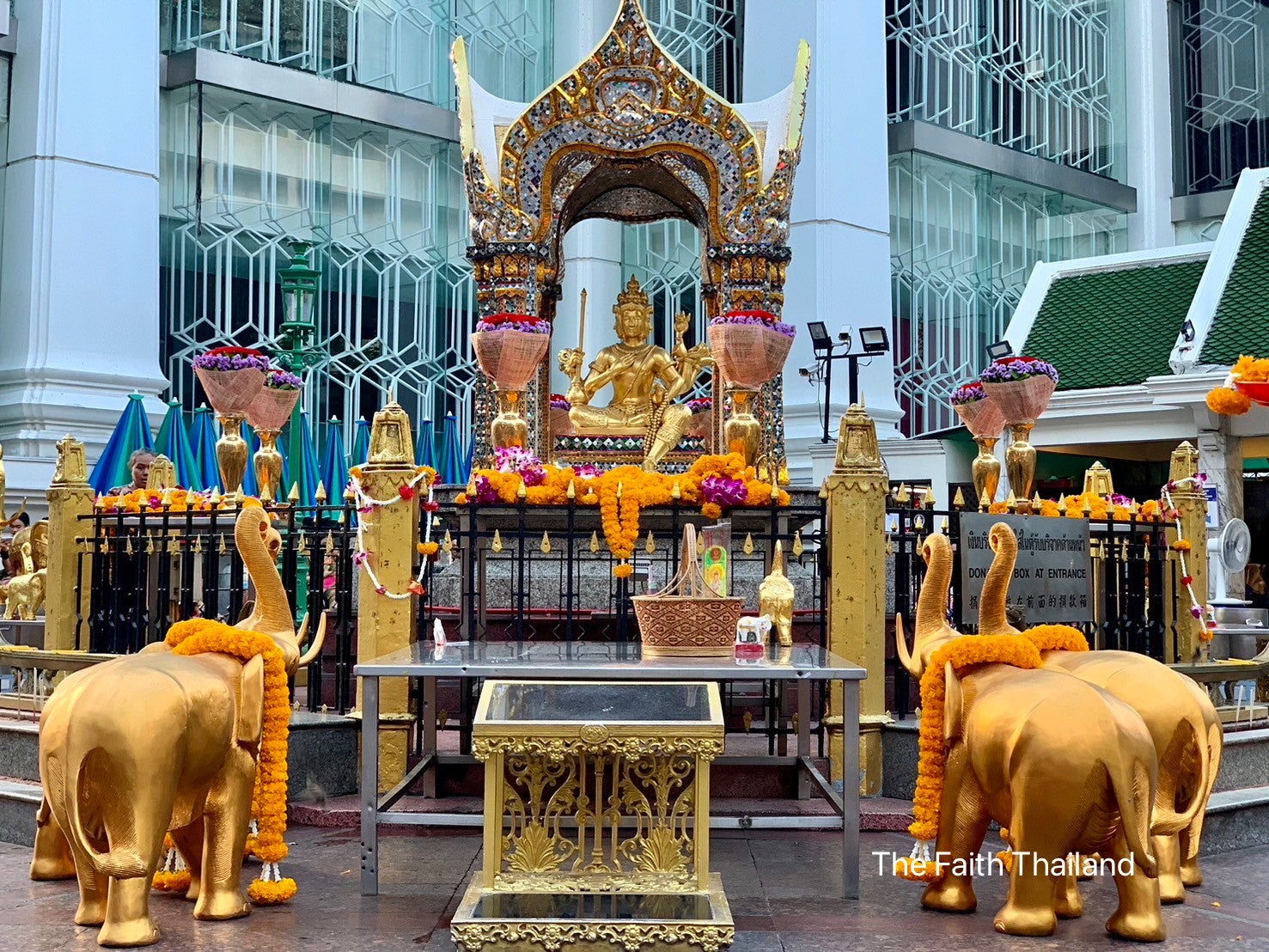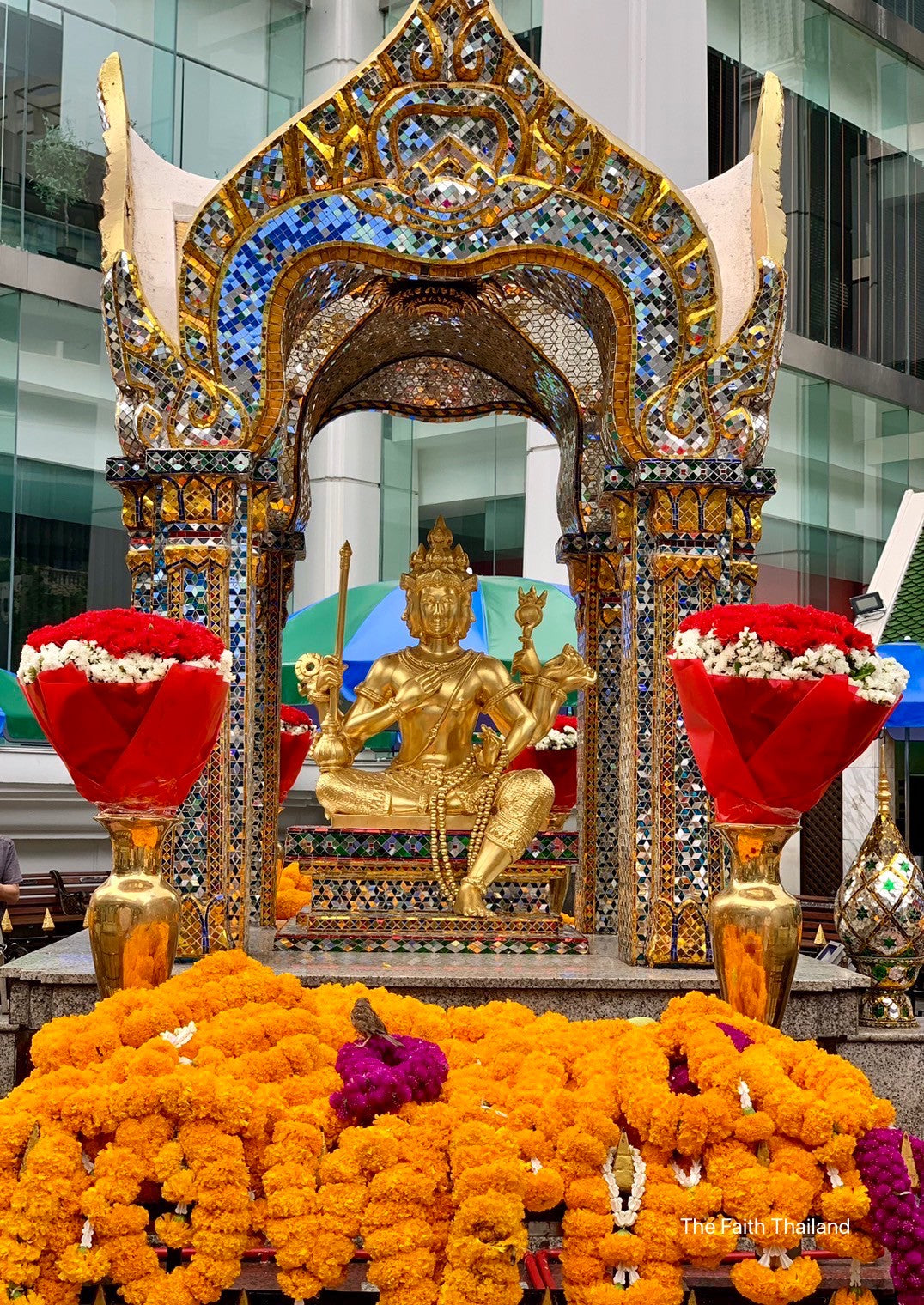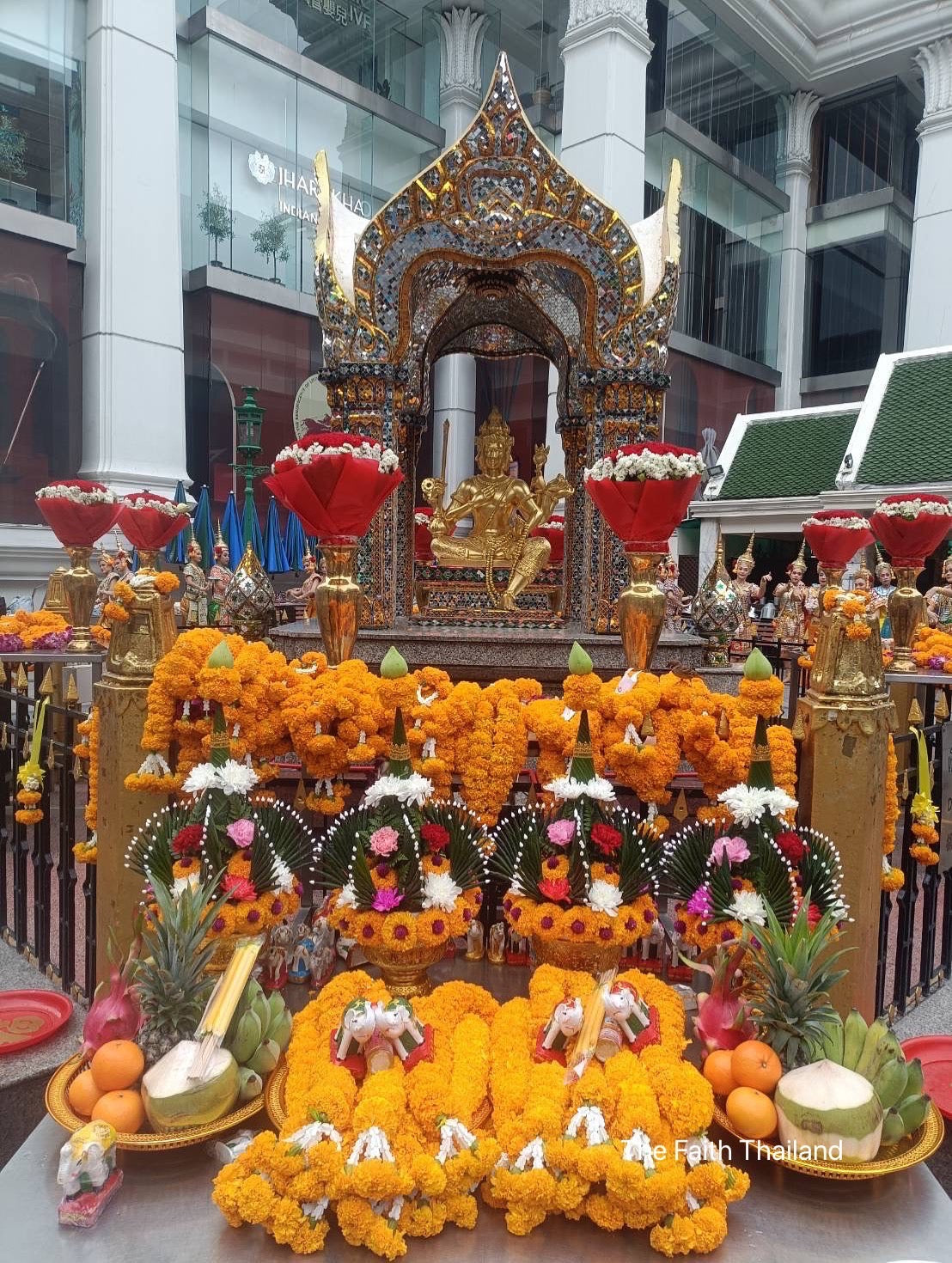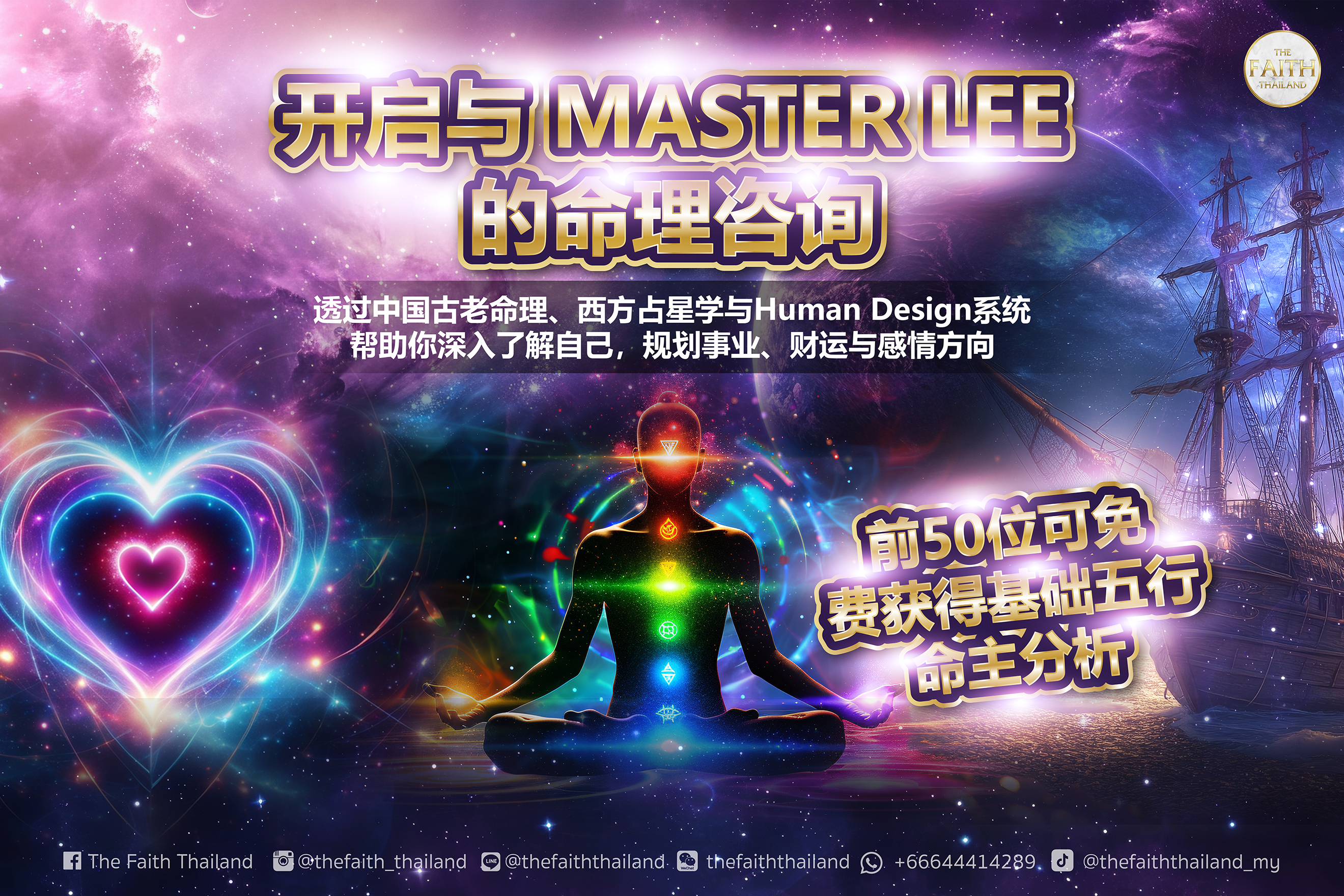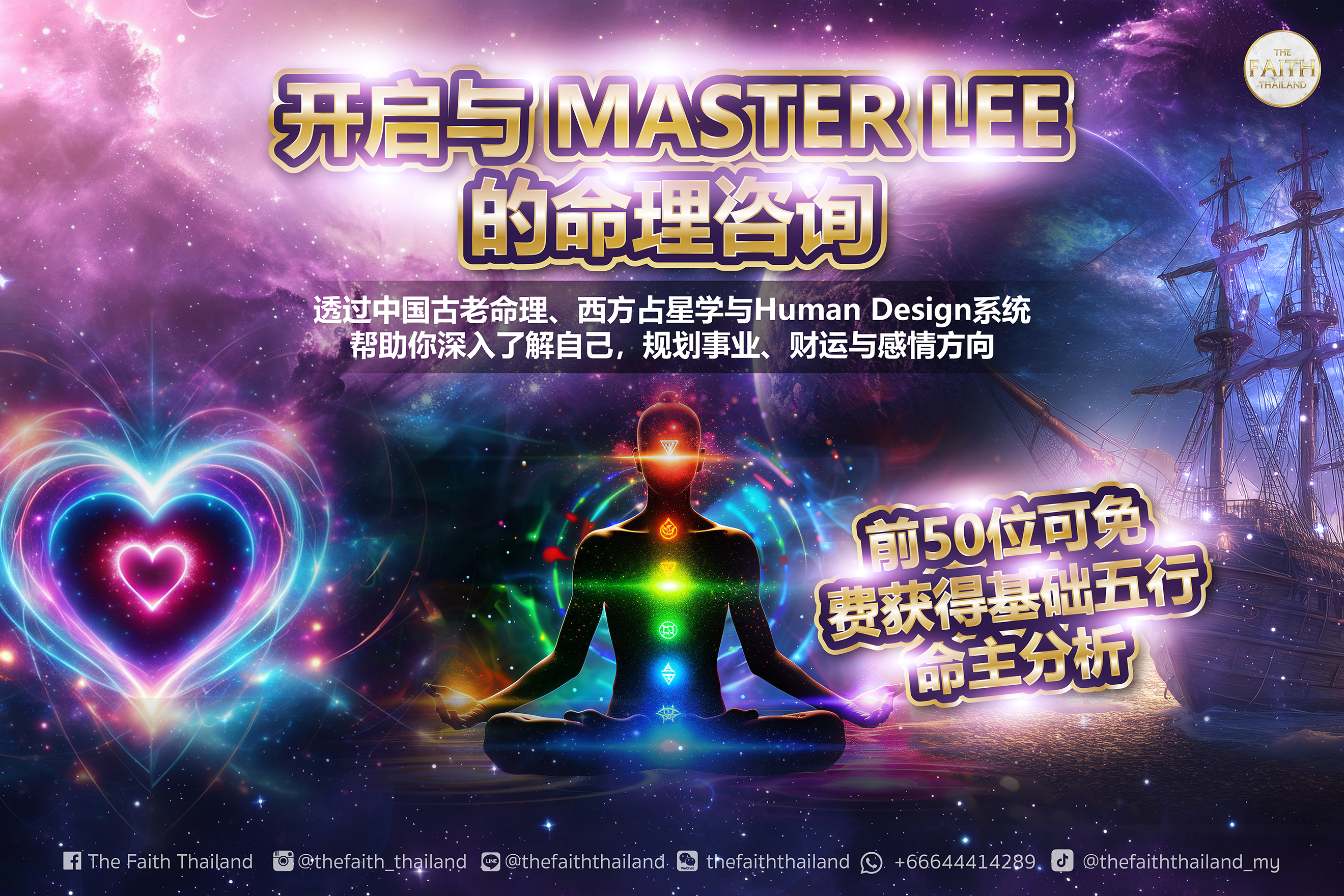拜四面佛的正确姿势:结合风水提升运势的方法
四面佛是泰国佛教文化的重要象征,因其掌管事业、爱情、健康与财富四大方面的神力而备受信徒尊崇。许多旅行者和当地人到曼谷四面佛祈愿,但你是否知道,拜四面佛除了虔诚之外,还有一些结合风水的小技巧,能更有效地提升自身运势?在这篇文章中,我们将深入探讨如何以正确的姿势拜四面佛,并通过风水学的方法,让您的祈愿更具成效。
拜四面佛的正确姿势与步骤
首先,在拜四面佛前需要了解其四个方向分别代表的意义:
- 第一面:代表事业和工作。
- 第二面:代表爱情和婚姻。
- 第三面:代表健康和平安。
- 第四面:代表财富和金钱。
正确的参拜顺序是从面对佛像的正面开始,依逆时针方向进行祈愿。每一面都可以点燃三炷香,并准备一束花献给佛像。这同时体现了风水中“顺流祈福”的概念,有助于维持能量的正向流转。更多关于如何规划您的祈愿行程,可以参考我们的文章《曼谷四面佛许愿:从传说到现实的探秘之旅》。
结合风水提升祈愿效果的小技巧
在拜四面佛时,风水学可以成为增强祈愿效果的辅助工具。例如:
- 方位选择:建议选择上午拜佛,因为太阳升起的方向象征新生与希望,这与风水中阳气充足的理念相符合。
- 服装颜色:在风水中,不同颜色具有特定的能量。如红色代表旺盛的财运,绿色则带来健康和平安。参拜时可选择适合自己祈愿目标的服装颜色。
- 香火供奉:供奉时要注意微风吹拂的方向,这有助于扩散正能量,象征您的祷告被带到更远的地方。
此外,通过祈愿后的小冥想,能量可以更好地在内心平稳流动。如果希望了解更多泰国寺庙的冥想体验,可以阅读我们的相关文章《祈愿与社会:泰国寺庙仪式对社区的影响与启示》。
常见错误及如何避免
许多信徒在拜四面佛时会因不了解文化礼节而犯下一些无心的错误。例如:
- 未按照正确次序参拜:这容易导致祈愿目标混乱,影响运势。
- 忽略跪拜姿势:标准的跪拜姿势是双手合十,身体平稳自然,不宜过于随意。
- 使用不合适的供品:供品应选择清洁、完好且适合四面佛的传统,例如新鲜的花瓣、椰汁或净水。
了解更多泰国拜佛文化礼节及注意事项,可以参考我们的文章《多样化的泰国寺庙:从热门景点到隐藏珍宝》。
成为信仰与风水的实践者
拜四面佛是一个结合虔诚信仰与文化传统的神圣仪式。而风水学的知识则为这一流程提供了一个实用的工具,帮助您的祈愿更加顺利。如果您有兴趣深入了解四面佛的相关故事与文化,可以阅读更多我们精选的文章,例如《走进泰国四面佛灵异传说的深邃世界》

此外,在我们的网站中,您还可以探索丰富的产品列表,寻找适合供奉或纪念的宗教相关物品。立即访问我们的产品页面,发现更多惊喜:查看全部产品。
结语
泰国的四面佛不仅仅是一尊佛像,它更是文化、风水与信仰交织的象征。掌握正确的拜佛姿势与风水小技巧,不仅能让您更虔诚地接近神灵,也能为您的事业、爱情、健康和财富注入源源不断的正能量。现在就准备好您的行程,让下次四面佛祈愿成为您人生旅程中不可或缺的一站!
推荐阅读:如果想了解更多泰国文化和宗教信仰,欢迎探索我们的其他精选内容,如《神秘使者:传说中的卧佛寺守护者》。
The Correct Posture for Worshiping the Four-Faced Buddha: Combining Feng Shui to Enhance Luck
The Four-Faced Buddha is an important symbol in Thai Buddhist culture, revered by followers for its divine power over career, love, health, and wealth. Many travelers and locals visit the Four-Faced Buddha in Bangkok to make wishes. But did you know that besides devotion, there are small feng shui tips that can effectively enhance your luck when worshiping the Four-Faced Buddha? In this article, we will explore how to worship the Four-Faced Buddha with the correct posture and use feng shui methods to make your wishes more fruitful.
The Correct Posture and Steps for Worshiping the Four-Faced Buddha
First, before worshiping the Four-Faced Buddha, you need to understand the significance of its four directions:
- First face: Represents career and work.
- Second face: Represents love and marriage.
- Third face: Represents health and peace.
- Fourth face: Represents wealth and money.
The correct worship sequence is to start from the front of the statue and proceed counterclockwise to make wishes. For each face, you can light three incense sticks and prepare a bouquet of flowers to offer to the statue. This reflects the feng shui concept of 'praying with the flow,' which helps maintain positive energy circulation. For more on planning your wish-making journey, you can refer to our article 'Making Wishes at the Four-Faced Buddha in Bangkok: From Legend to Reality'.
Feng Shui Tips to Enhance the Effectiveness of Your Wishes
When worshiping the Four-Faced Buddha, feng shui can serve as a supplementary tool to enhance the effectiveness of your wishes. For example:
- Direction Choice: It is recommended to worship in the morning, as the direction of the rising sun symbolizes rebirth and hope, aligning with the feng shui concept of abundant yang energy.
- Clothing Color: In feng shui, different colors possess specific energies. For instance, red signifies prosperity, while green brings health and peace. Choose clothing colors that align with your wish goals when worshiping.
- Incense Offering: When offering incense, pay attention to the direction of the breeze, as it helps disperse positive energy, symbolizing your prayers reaching farther places.
Additionally, a small meditation session after making wishes can help energy flow smoothly within your heart. If you wish to learn more about the meditation experiences in Thai temples, you can read our related article 'Wishes and Society: The Impact and Inspiration of Thai Temple Rituals on Communities'.
Common Mistakes and How to Avoid Them
Many followers make unintentional mistakes when worshiping the Four-Faced Buddha due to a lack of understanding of cultural etiquette. For example:
- Not Following the Correct Order of Worship: This can lead to confusion in wish goals, affecting luck.
- Ignoring the Kneeling Posture: The standard kneeling posture is with palms together, body stable and natural, not overly casual.
- Using Inappropriate Offerings: Offerings should be clean, intact, and suitable for the Four-Faced Buddha, such as fresh petals, coconut water, or purified water.
For more on Thai Buddhist cultural etiquette and precautions, you can refer to our article 'Diverse Thai Temples: From Popular Attractions to Hidden Gems'.
Becoming a Practitioner of Faith and Feng Shui
Worshiping the Four-Faced Buddha is a sacred ceremony that combines devout faith and cultural tradition. The knowledge of feng shui provides a practical tool to help your wishes go smoothly. If you are interested in learning more about the stories and culture of the Four-Faced Buddha, you can read more of our selected articles, such as 'Exploring the Deep World of the Four-Faced Buddha's Mystical Legends'.

Additionally, on our website, you can explore a rich range of products to find religious items suitable for devotion or commemoration. Visit our product page now to discover more surprises: View All Products.
Conclusion
The Four-Faced Buddha in Thailand is not just a statue; it is a symbol of culture, feng shui, and faith intertwined. Mastering the correct posture and feng shui tips for worshiping the Buddha will not only allow you to approach the divine with greater sincerity but also infuse your career, love, health, and wealth with continuous positive energy. Prepare your journey now and let the next wish-making at the Four-Faced Buddha become an indispensable stop in your life's journey!
Recommended Reading: If you wish to explore more about Thai culture and religious beliefs, feel free to explore our other selected content, such as 'The Mysterious Messenger: The Legendary Guardian of the Reclining Buddha Temple'.
